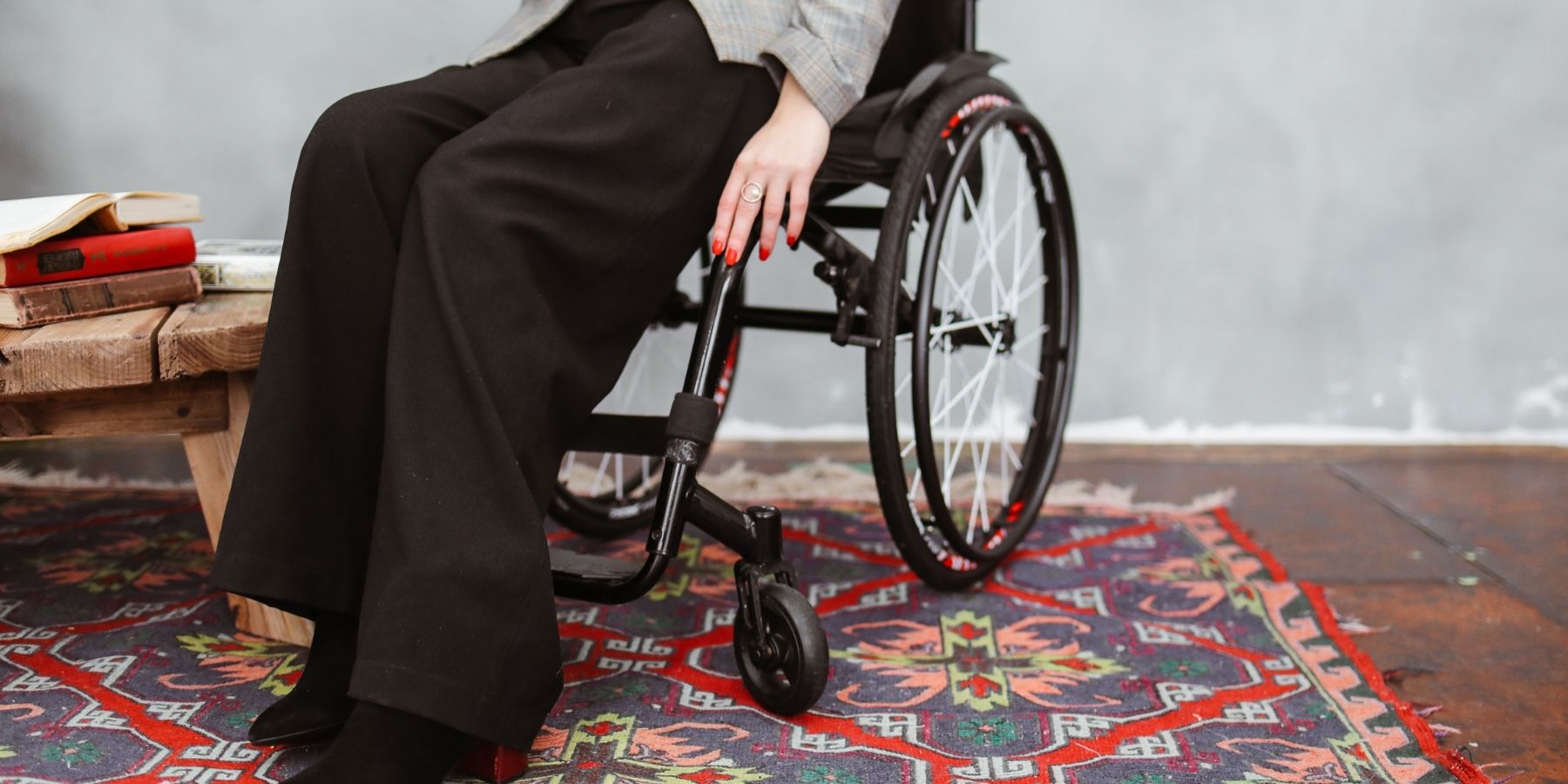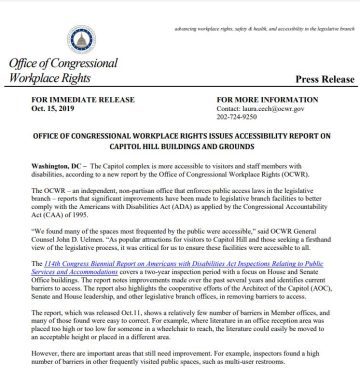Washington, DC – The Capitol complex is more accessible to visitors and staff members with disabilities, according to a new report by the Office of Congressional Workplace Rights (OCWR).
The OCWR – an independent, non-partisan office that enforces public access laws in the legislative branch – reports that significant improvements have been made to legislative branch facilities to better comply with the Americans with Disabilities Act (ADA) as applied by the Congressional Accountability Act (CAA) of 1995.
“We found many of the spaces most frequented by the public were accessible,” said OCWR General Counsel John D. Uelmen. “As popular attractions for visitors to Capitol Hill and those seeking a firsthand view of the legislative process, it was critical for us to ensure these facilities were accessible to all.
The 114th Congress Biennial Report on Americans with Disabilities Act Inspections Relating to Public Services and Accommodations covers a two-year inspection period with a focus on House and Senate Office buildings. The report notes improvements made over the past several years and identifies current barriers to access. The report also highlights the cooperative efforts of the Architect of the Capitol (AOC), Senate and House leadership, and other legislative branch offices, in removing barriers to access.
The report, which was released Oct.11, shows a relatively few number of barriers in Member offices, and many of those found were easy to correct. For example, where literature in an office reception area was placed too high or too low for someone in a wheelchair to reach, the literature could easily be moved to an acceptable height or placed in a different area.
However, there are important areas that still need improvement. For example, inspectors found a high number of barriers in other frequently visited public spaces, such as multi-user restrooms. “Still, I am confident that we are headed in the right direction toward increased accessibility,” Mr. Uelmen said. “This is due in large part to the work we have done to educate employing offices about how to achieve accessibility.”

